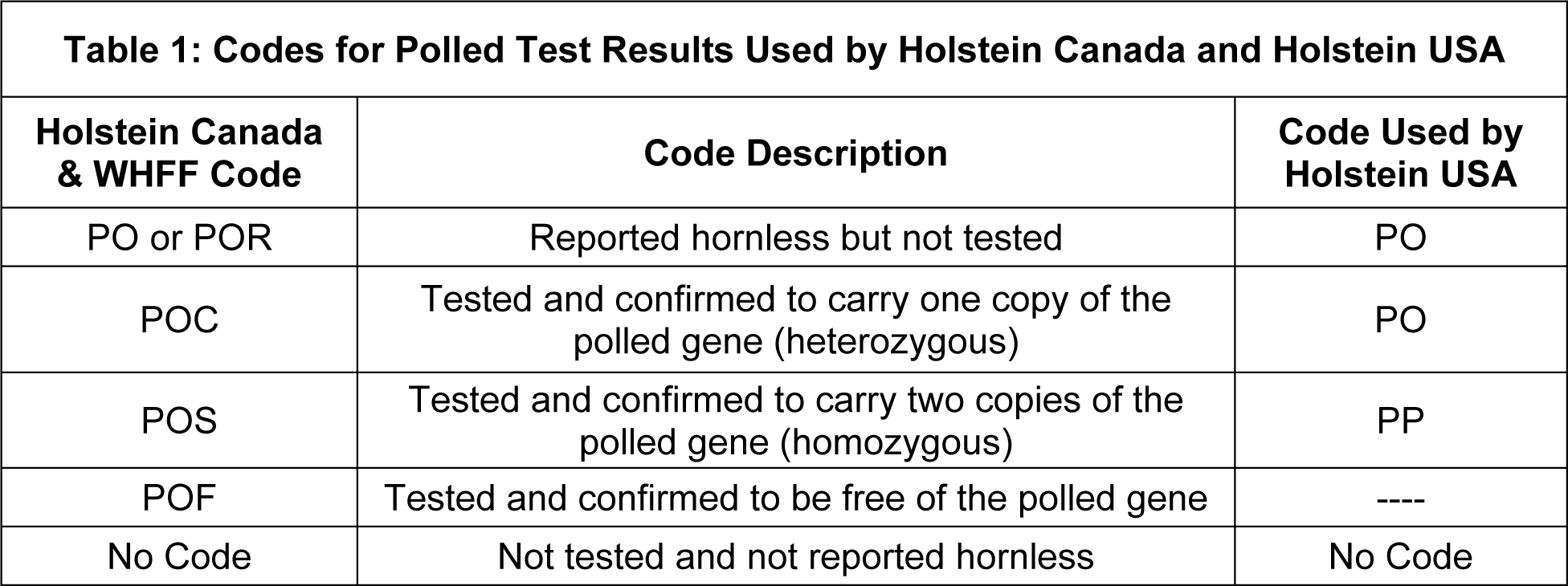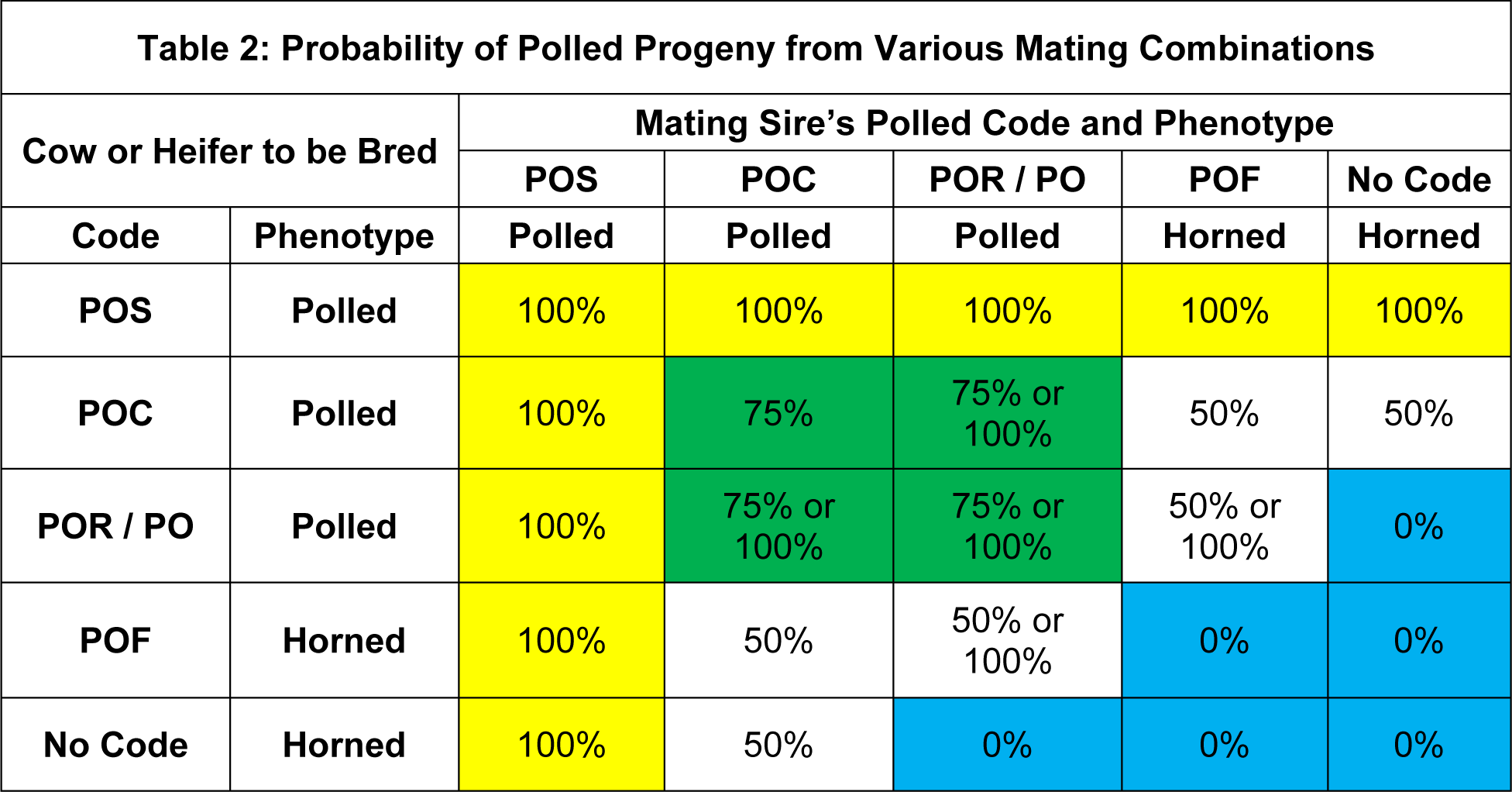Hornless dairy cattle, otherwise known as polled cattle, have been preferred over horned animals for decades. For this reason, it has been common herd management practise in most developed countries to dehorn animals when they are young. Methods for dehorning have traditionally aimed at minimizing any pain to the animal. Nevertheless, interest in applying genetic selection in favour of the “polled” gene has grown significantly in recent years even though the presence of such a gene in dairy cattle has been known for over 70 years.
Testing for Polled
A genetic test to identify animals with the polled gene has been available for several years. The accuracy of this test has been less than perfect, however, since it looked for a marker linked to the polled mutation rather than the gene itself. Researchers in Germany (Medugorac et al., 2012) recently published their discovery of two mutations associated with polledness in dairy cattle. The fact that two mutations were found helps explain why previous marker-based results were more variable than expected. The commercial availability of these new DNA tests for the polled gene will make genetic selection easier for dairy cattle breeders and artificial insemination organizations. Holstein Canada has worked with the World Holstein-Friesian Federation (WHFF) to derive international standards for the coding of tests for the polled gene, as outlined in Table 1. Given the broad exchange of genetic material between Canada and the United States, the codes used by the Holstein USA Association to identify an animal’s status for polled are also provided.
Mode of Transmission
In dairy cattle improvement, there are various characteristics of interest that are known to be controlled by a single gene. These include all genetic recessives, such as CVM, Brachyspina, BLAD and DUMPS in Holsteins as well as others in other breeds. In Holsteins, the traditional gene responsible for red coat colour is also known to be controlled by a single gene. The major difference between these examples, which have a recessive mode of expression, and the polled gene is that it is expressed in a manner that is “dominant” over the gene resulting in horned animals. This “dominance” feature makes selection for polled animals much faster when breeders aim to do so. All animals that have one or two copies of the polled allele will be polled so all horned animals must not carry the gene at all. Table 2 presents the likelihood of producing polled progeny depending on the polled status of the parents.
As soon as an animal is DNA tested and confirmed to carry two copies of the polled gene (i.e.: status of POS) then 100% of its progeny will be polled regardless of the polled status of their mates. Animals that are polled themselves are automatically a carrier of at least one copy of the polled gene and will be identified as POC if tested or as POR (formerly PO) if the breeder reported the animal to be hornless without conducting the DNA test. For animals that carry one copy of the polled gene, they would normally have 50% of their progeny without horns. When two polled animals are mated together, approximately 75% of the resulting progeny will be polled but this would reach 100% if either parent carried two copies of the polled gene. Animals that develop horns after birth cannot transmit the polled gene and when two such animals are
mated, none of the progeny will be polled.
Scurs
Another gene associated with horn growth in cattle is commonly known as “scurs”. Scurs are horn growths that are loose and not attached to the skull like normal horns. Scurs are controlled by a gene that is different than the one controlling horns. In fact, although horned animals may also carry the scurs gene, the scurs are only visible in polled animals. The presence of scurs on some polled animals can, therefore, lead to some confusion but they should be reported as polled.
Summary
Interest in polled dairy cattle continues to grow in Canada and internationally. The recent discovery of specific DNA testing that is 100% accurate for identifying polled animals, whether they are heterozygous (one copy) or homozygous (two copies) makes genetic selection easier. Since the polled gene is dominant over the gene resulting in horns, the use of polled sires yields at least 50% of their progeny being polled. Now that various polled genomic young sires and heifers are available in the Holstein breed that have LPI values exceeding 2000 points, breeders no longer need to sacrifice genetic improvement when selecting for polled dairy cattle.
Source: CDN













